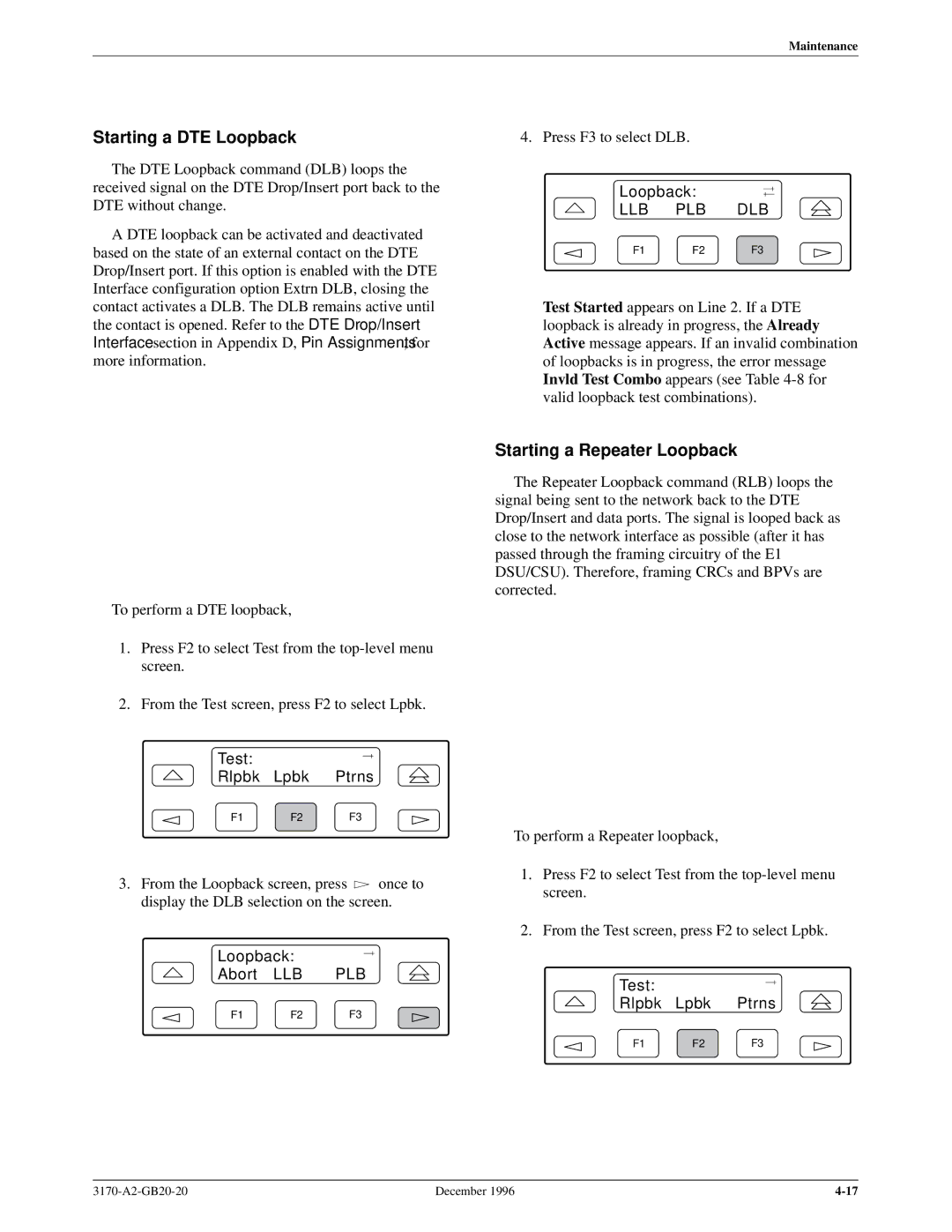
Maintenance
Starting a DTE Loopback
The DTE Loopback command (DLB) loops the received signal on the DTE Drop/Insert port back to the DTE without change.
A DTE loopback can be activated and deactivated based on the state of an external contact on the DTE Drop/Insert port. If this option is enabled with the DTE Interface configuration option Extrn DLB, closing the contact activates a DLB. The DLB remains active until the contact is opened. Refer to the DTE Drop/Insert Interface section in Appendix D, Pin Assignments, for more information.
To perform a DTE loopback,
1.Press F2 to select Test from the
2.From the Test screen, press F2 to select Lpbk.
Test: |
|
|
Rlpbk | Lpbk | Ptrns |
F1 | F2 | F3 |
3.From the Loopback screen, press ![]() once to display the DLB selection on the screen.
once to display the DLB selection on the screen.
Loopback:
Abort LLB PLB
F1 F2 F3
4. Press F3 to select DLB.
Loopback:
LLB PLB DLB
F1 F2 F3
Test Started appears on Line 2. If a DTE loopback is already in progress, the Already Active message appears. If an invalid combination of loopbacks is in progress, the error message Invld Test Combo appears (see Table
Starting a Repeater Loopback
The Repeater Loopback command (RLB) loops the signal being sent to the network back to the DTE Drop/Insert and data ports. The signal is looped back as close to the network interface as possible (after it has passed through the framing circuitry of the E1 DSU/CSU). Therefore, framing CRCs and BPVs are corrected.
To perform a Repeater loopback,
1.Press F2 to select Test from the
2.From the Test screen, press F2 to select Lpbk.
Test:
Rlpbk Lpbk Ptrns
F1 F2 F3
December 1996 |
